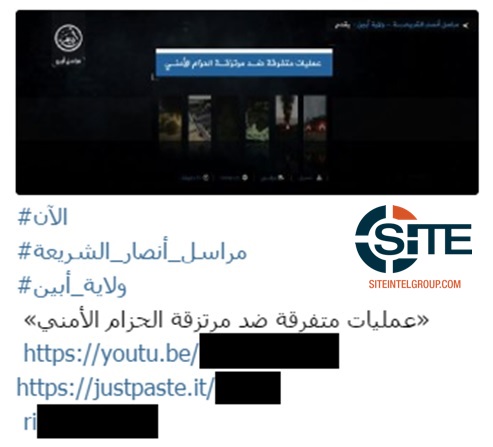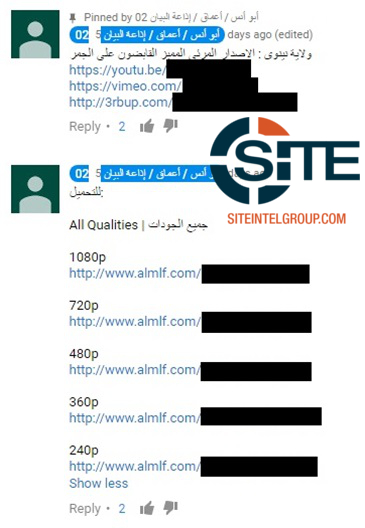The Current State of YouTube
Image: SITE

Terrorists' Methods of Exploiting YouTube
To this point, YouTube has made it easy for users to flag policy-violating content and worked toward implementing automated solutions for detecting terrorist content. However, as I've stated before, terrorist propaganda comprises a lot more than the gory execution videos which detection technologies may seek to find. And, just as troublingly, terrorist groups have repeatedly found ways to bypass unwanted attention from non-supporting users and administrators.For instance, in order to prevent users from flagging explicit or inflammatory extremist videos, terrorist media groups and disseminators like The Upload Knights and AQ's As-Sahab Media Foundation often label YouTube videos as "unlisted," meaning that the videos cannot be searched—only accessed if you are given the link. This feature works well to keep a video somewhat contained to supporters and prospects. They are also just as easy as any other link to find on the messaging service Telegram, though, after which they can be further disseminated on social media.YouTube strictly prohibits content intended to recruit for terrorist organizations, incite violence, celebrate terrorist attacks or otherwise promote acts of terrorism. We also do not permit foreign terrorist organizations to use YouTube. Content intended to document events connected to terrorist acts or news reporting on terrorist activities may be allowed on the site with sufficient context and intent. However, graphic or controversial footage may be subject to age-restrictions or a warning screen.
IS video (left) and AQAP video (right) uploaded to YouTube and marked as unlisted. Image: SITE
Image in the video reads, "The link is in the video description," where another YouTube link is provided. Image: SITE

Toward Better Solutions
Image: SITE
Image: SITE
Image: SITE
Image: SITE
Image: SITE
Image: SITE